Keep Middlesex Moving, Inc.
Arlene Holt, Operations Manager
732-745-4465, Ext. 102
aholt@kmm.org
RELEASE DATE: February 6, 2025
Street Smart NJ works to change behaviors that contribute to pedestrian-vehicle crashes.
NEW BRUNSWICK, NJ – The Rutgers-New Brunswick Police Department has launched a Street Smart NJ pedestrian safety campaign that will continue through the spring semester to raise awareness about ways to reduce pedestrian-vehicle crashes.
This public education campaign is being conducted in partnership with Keep Middlesex Moving, Inc. (KMM) the transportation management association for Middlesex County. The Rutgers University Police Department (RUPD) is also hosting campaigns on the Rutgers-Camden and Rutgers-Newark campuses this semester. The North Jersey Transportation Planning Authority (NJTPA) manages the Street Smart NJ program, which has worked with more than 275 colleges, municipalities, counties and other partners across the state to change the behaviors that contribute to pedestrian-vehicle crashes.
“Safety at Rutgers is a shared responsibility. The RUPD is committed to engaging and educating both the university and surrounding communities,” said Kenneth Cop, Vice president of Public Safety and Chief of University Police. “As part of these efforts, we are partnering with the NJTPA to roll out the Street Smart NJ program on all Rutgers campuses through our community policing units. This program will foster safer driver and pedestrian behaviors, increasing the wellbeing of the university community at large.”
Street Smart NJ is a collaborative effort between public, private and non-profit organizations and one of many initiatives in New Jersey working to help the state reach its goal of zero pedestrian fatalities. During the campaign, RUPD will be enforcing pedestrian-related laws and working with partners like KMM to distribute safety materials. The campaign reminds people that everyone has a role to play in making our streets safer. Drivers need to obey speed limits and stop for people crossing; people walking need to use crosswalks (marked and unmarked) and cross with the signals; and everyone needs to avoid distractions.
“The NJTPA’s Street Smart NJ program is an effective method of communicating safety messages,” said Middlesex County Commissioner Charles Kenny, who serves as First Vice Chair of the NJTPA’s Board of Trustees. “In Middlesex County we are dedicated to our Vision Zero program, working hard to keep drivers and pedestrians safe. It takes a whole community to prevent traffic fatalities, I am proud to support this implementation at Rutgers University for the spring semester.”
Pedestrian safety is a concern nationwide, but it is particularly important in New Jersey, where the fatality rate far exceeds the national average. Pedestrians comprised 26.7 percent (183 people) of the 685 people killed in crashes in New Jersey in 2022, while the national average was 18 percent, according to the most recent data available from the National Highway Traffic Safety Administration.
“Pedestrian safety is a top priority for Keep Middlesex Moving,” said Brian N. Tobin, Executive Director of KMM. “We are proud to collaborate with Rutgers University and NJTPA to ensure safe travel for all road users—whether walking, biking, or driving. Through the Street Smart
NJ public education campaign, we aim to foster a culture of safety and shared responsibility, raising awareness about the importance of keeping everyone safe in and around the Rutgers University campus.”
Businesses, organizations and individuals interested in helping to promote the Rutgers-New Brunswick Street Smart NJ campaign, should contact Arlene Holt, KMM’s Operations Director at 732-745-4465 x102 or aholt@kmm.org. To learn more about the campaign, visit bestreetsmartnj.org. The campaign is also on Facebook (/StreetSmartNJ) and X (@njstreetsmart). To learn more about Keep Middlesex Moving, visit www.kmm.org.

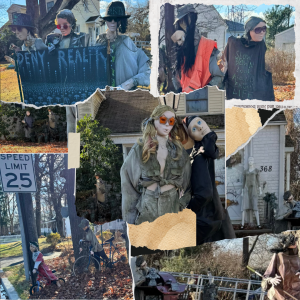
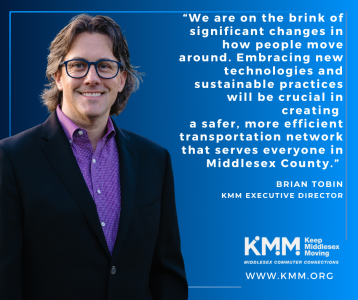
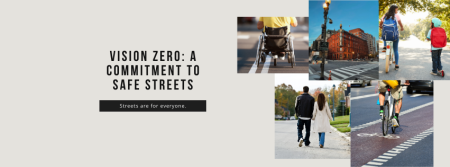
 Nature doesn’t stop when it gets cold outside and neither should you. This Winter, bundle up and get outdoors this winter to discover what Middlesex County has to offer.
Nature doesn’t stop when it gets cold outside and neither should you. This Winter, bundle up and get outdoors this winter to discover what Middlesex County has to offer.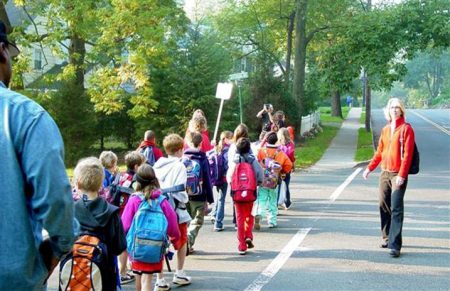 Although many school districts begin in September, we celebrate National Back to School Month as a way to prepare for the coming school year.
Although many school districts begin in September, we celebrate National Back to School Month as a way to prepare for the coming school year.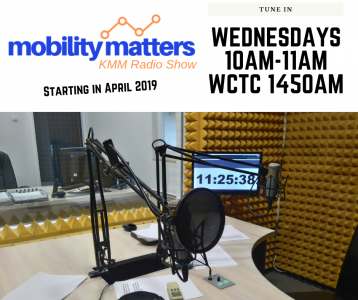 We are thrilled to share that KMM will be launching a radio show /podcast – Mobility Matters – on WCTC 1450 AM radio beginning in April 2019. Tune in on Wednesdays at 10 am. Join us as we talk to leading experts in the fields of transportation, sustainability, and economic development.
We are thrilled to share that KMM will be launching a radio show /podcast – Mobility Matters – on WCTC 1450 AM radio beginning in April 2019. Tune in on Wednesdays at 10 am. Join us as we talk to leading experts in the fields of transportation, sustainability, and economic development. Commuting can be one of those items that fall way down on the list of things you love to do. And you are not alone. The average travel time for working New Jerseyans is 31.2 minutes, which is almost seven minutes longer than the average US commute. So what can we do to make your commute better?
Commuting can be one of those items that fall way down on the list of things you love to do. And you are not alone. The average travel time for working New Jerseyans is 31.2 minutes, which is almost seven minutes longer than the average US commute. So what can we do to make your commute better?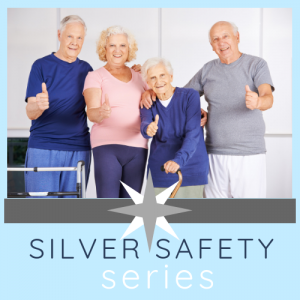 KMM is excited to announce the launch of our new program for active adults called – Silver Safety Series. The program provides a number of interactive presentations that deal with driving safety, pedestrian issues, on-demand transportation alternatives, and even health and exercise. This program can be presented individually or as series and features interactive presentations, light refreshments, and giveaways.
KMM is excited to announce the launch of our new program for active adults called – Silver Safety Series. The program provides a number of interactive presentations that deal with driving safety, pedestrian issues, on-demand transportation alternatives, and even health and exercise. This program can be presented individually or as series and features interactive presentations, light refreshments, and giveaways.